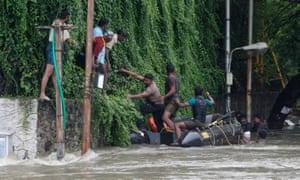
This time last year the world’s weather was being dominated by one of the strongest El Niño events on record. As surface waters in the equatorial Eastern Pacific warmed by more than 2°C, a chain reaction of extreme weather events was set in motion. From torrential rains in Peru and huge storms pounding the coast of California, to drought and bushfire in Australia and Indonesia and catastrophic floods in south-east India (submerging parts of Chennai under eight metres of water), this El Niño really packed some punch. ByMay 2016 the El Niño conditions had gone, but the big question now is whether El Niño’s opposite phase – La Niña – is waiting in the wings?
La Niña, which is associated with abnormal cooling of equatorial Eastern Pacific waters, usually does follow El Niño, and in this case we’d expect to see La Niña emerge by the end of this year or in early 2017. And like El Niño, La Niña also tends to whip up some weird weather, often bringing cooler temperatures to many regions, drier conditions to East Africa and wetter weather over south-east Asia.
So far scientists have measured cooler than average sea surface temperatures in the Central Pacific, but this hasn’t spread further, and right now most climate models are predicting a return to average conditions for the Pacific, or at most a weak La Niña event. If La Niña does arrive then its cooling influence might cause a break in the string of global record-breaking warm months we’ve seen since March 2015, but without La Niña the world’s thermostat is likely to continue inching upwards.
No comments:
Post a Comment